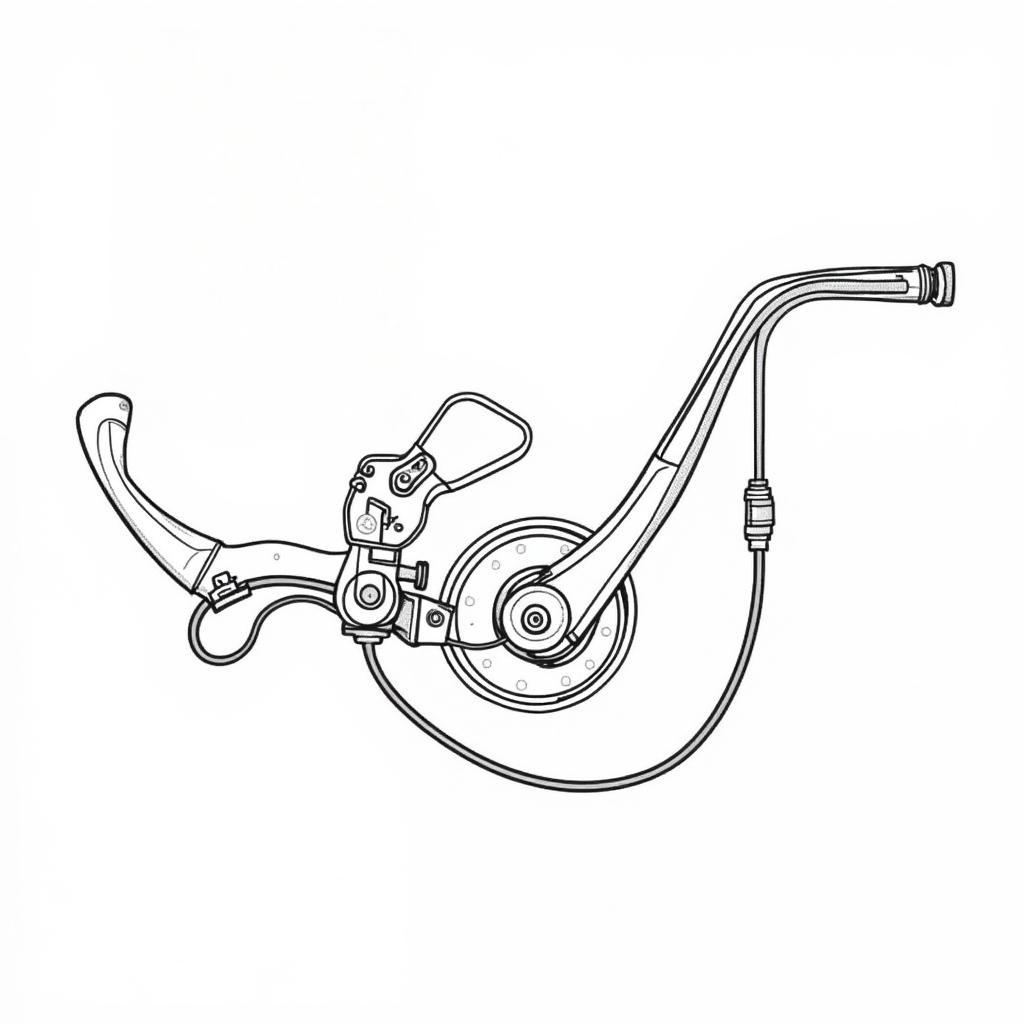A malfunctioning handbrake, also known as a parking brake or emergency brake, is a safety hazard that needs immediate attention. Knowing how to repair a handbrake on your car can save you money on mechanic fees and ensure your vehicle is safe to operate. This guide provides a comprehensive walkthrough of common handbrake issues and how to fix them.
Understanding Your Car’s Handbrake System
Before diving into repairs, it’s essential to understand how your car’s handbrake system works. Most modern vehicles utilize one of two systems: a cable-operated system or an electronic system. Cable-operated systems are more common in older vehicles and involve a series of cables and levers that connect the handbrake lever to the rear brakes. Electronic systems, found in newer cars, use an electric motor to engage the parking brake. Identifying your car’s system is the first step in diagnosing the problem.
Diagnosing Common Handbrake Problems
Several issues can cause a handbrake to malfunction. Is your handbrake lever traveling too high? This could indicate stretched cables. Does the handbrake fail to hold the car on an incline? This might suggest worn brake shoes or pads. Other problems include seized cables, broken levers, or issues with the electronic control unit in electronically operated systems. Proper diagnosis is crucial for effective repair.
 Handbrake Lever Mechanism Diagram
Handbrake Lever Mechanism Diagram
How to Repair a Cable-Operated Handbrake
If your car has a cable-operated handbrake, several repairs can be done at home with basic tools.
-
Adjusting the Cable: Often, a loose handbrake can be fixed by simply adjusting the cable tension. Locate the adjusting nut, usually under the center console or near the rear wheels. Tighten the nut gradually while checking the handbrake lever travel.
-
Replacing the Cable: If adjusting the cable doesn’t solve the problem, you may need to replace it. This involves disconnecting the old cable from the lever and brake mechanism and installing a new one.
-
Replacing Brake Shoes: Worn brake shoes can also contribute to a weak handbrake. Remove the rear brake drums and inspect the shoes for wear. If they’re thin or damaged, replace them with new ones.
How to Troubleshoot an Electronic Handbrake
Electronic handbrakes are more complex and often require specialized diagnostic tools. However, you can still perform some basic troubleshooting.
-
Check the Warning Lights: If your electronic handbrake is malfunctioning, a warning light should appear on your dashboard. Consult your owner’s manual to understand the specific codes and their meanings.
-
Check the Fuses: A blown fuse could also be the culprit. Locate the fuse box and check the fuse associated with the electronic parking brake.
-
Seek Professional Help: For more complex issues, it’s best to consult a qualified mechanic who has experience with electronic handbrake systems.
Maintaining Your Handbrake
Regular maintenance can prevent handbrake problems. Ensure your handbrake is fully engaged when parked, especially on inclines. Periodically inspect the cables for wear and tear and lubricate moving parts. For electronic systems, have them checked during regular service appointments.
Conclusion
Maintaining a properly functioning handbrake is essential for your safety. While some repairs, like adjusting a cable, can be handled at home, other issues may require professional assistance. By understanding your car’s handbrake system and following the appropriate repair procedures, you can ensure your handbrake works effectively and keeps your vehicle secure. Remember to always consult your owner’s manual for specific instructions related to your car model. How to repair a car tyre puncture is another important skill to have.
FAQs
- How often should I check my handbrake? You should check your handbrake every time you have your car serviced, or at least every six months.
- How do I know if my handbrake cable is stretched? If your handbrake lever travels too high or the handbrake doesn’t hold the car securely, the cable may be stretched.
- Can I drive with a faulty handbrake? While technically possible, driving with a faulty handbrake is unsafe and not recommended.
- How much does it cost to replace a handbrake cable? The cost varies depending on your car model and labor rates, but it typically ranges from $50 to $200.
- What is the difference between a handbrake and an emergency brake? They are the same thing. The terms are used interchangeably.
- How do I adjust the handbrake on a drum brake system? The adjustment is usually done at the rear wheels by accessing an adjusting nut behind the brake drum.
- What should I do if my electronic handbrake warning light comes on? Consult your owner’s manual and if the problem persists, seek professional help.
Common Handbrake Scenarios
- Handbrake doesn’t engage: This can be due to stretched cables, worn brake shoes, or problems with the electronic system.
- Handbrake is stuck: A seized cable or caliper can cause the handbrake to become stuck.
- Handbrake lever feels loose: This usually indicates a need for cable adjustment.
Further Resources
For more information on car maintenance and repair, check out our article on how to repair a car tyre puncture.
Need further assistance? Contact us via WhatsApp: +1(641)206-8880, or Email: [email protected]. Our customer support team is available 24/7.

Leave a Reply